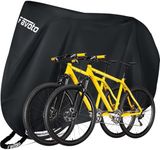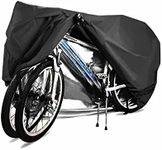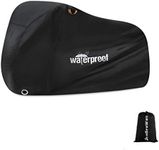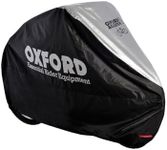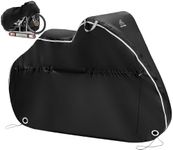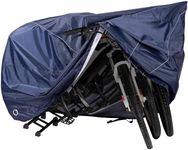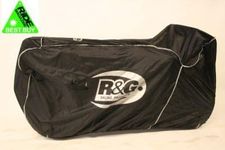Buying Guide for the Best Bike Covers
Choosing the right bike cover is essential to protect your bicycle from the elements, dust, and potential damage. A good bike cover will extend the life of your bike by shielding it from rain, sun, and dirt, whether you store it indoors or outdoors. When selecting a bike cover, consider the environment where your bike will be stored, the size of your bike, and how often you will need to use the cover. Understanding the key specifications will help you make an informed decision that best suits your needs.MaterialThe material of a bike cover is crucial as it determines the level of protection it offers. Common materials include polyester, nylon, and PVC. Polyester is lightweight and water-resistant, making it suitable for mild weather conditions. Nylon is more durable and offers better protection against rain and UV rays. PVC is waterproof and provides excellent protection against harsh weather but can be heavier. Choose a material based on the typical weather conditions in your area and how much protection your bike needs.
SizeThe size of the bike cover should match the dimensions of your bike to ensure a snug fit. Covers are usually categorized by bike type, such as road bikes, mountain bikes, or e-bikes, and may also list specific dimensions. A cover that is too small won't provide adequate protection, while one that is too large may not stay in place. Measure your bike's length, height, and width, and compare these measurements to the cover's specifications to find the right fit.
WaterproofingWaterproofing is a key feature if you plan to store your bike outdoors or in a damp environment. Look for covers with waterproof coatings or sealed seams to prevent water from seeping through. Some covers are water-resistant, which means they can handle light rain but may not withstand heavy downpours. Consider the typical weather conditions in your area and choose a cover with the appropriate level of waterproofing to keep your bike dry.
UV ProtectionUV protection is important if your bike will be exposed to sunlight for extended periods. UV rays can cause fading and damage to your bike's paint and components. Covers with UV protection are treated to block harmful rays, preserving your bike's appearance and longevity. If your bike will be stored in a sunny location, opt for a cover with high UV protection to prevent sun damage.
VentilationVentilation is a feature that helps prevent moisture buildup under the cover, which can lead to rust and mold. Some covers have vents or breathable materials that allow air to circulate while still providing protection. If you live in a humid area or plan to cover your bike for long periods, choose a cover with good ventilation to keep your bike dry and in good condition.
Security FeaturesSecurity features such as lock holes or straps can help keep your bike cover in place and deter theft. Lock holes allow you to secure the cover with a lock, while straps can be used to fasten the cover tightly around the bike. If you store your bike in a public or high-traffic area, consider a cover with these features to enhance security and prevent the cover from being easily removed.
PortabilityPortability is important if you need to transport the cover frequently or have limited storage space. Lightweight covers are easier to carry and often come with a storage bag for convenience. If you plan to take your cover on trips or need to store it when not in use, look for a compact and portable option that fits your lifestyle.
